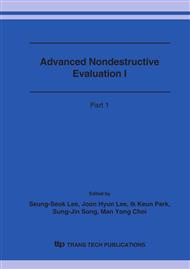p.1470
p.1475
p.1479
p.1483
p.1487
p.1491
p.1495
p.1499
p.1503
Durability Evaluations of the Car Body for Rubber-Tired Light Rail Vehicles
Abstract:
This study was aimed at evaluating the durability of the car body for rubber-tired light rail vehicles according to Korean-standardized specifications for light rail vehicles (size, strength, structure, weight, etc.). The strengths of the car body were analyzed under two weight conditions (tare weight and maximum passenger weight) by using the finite element method. Based on the results of the analysis, dynamic stresses were measured by using strain gauges, including rosette gauges, while the train was running on the test track. Various experimental results have verified the durability and safety of the car body.
Info:
Periodical:
Pages:
1487-1490
Citation:
Online since:
October 2006
Authors:
Price:
Сopyright:
© 2006 Trans Tech Publications Ltd. All Rights Reserved
Share:
Citation:


